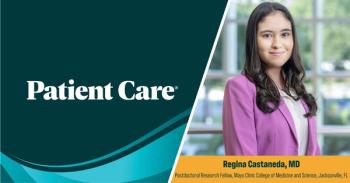
Drug Benefit Trends
- Drug Benefit Trends Vol 20 No 3
- Volume 20
- Issue 3
Back and Neck Pain Costs Climb Rapidly
Back and neck problems are among the most commonly encountered symptoms in clinical practice. In 2002, an estimated 59 million US adults, or approximately 26% of the adult population, self-reported back pain in the previous 3 months, and 30.1 million US adults, or about 14% of the adult population, self-reported neck pain in the same period, according to a study by Martin and colleagues published in the February 13 issue of the Journal of the American Medical Association. Low back pain alone accounted for 2% of all physician office visits; only routine examinations, diabetes, and hypertension resulted in more office visits.
Back and neck problems are among the most commonly encountered symptoms in clinical practice. In 2002, an estimated 59 million US adults, or approximately 26% of the adult population, self-reported back pain in the previous 3 months, and 30.1 million US adults, or about 14% of the adult population, self-reported neck pain in the same period, according to a study by Martin and colleagues published in the February 13 issue of the Journal of the American Medical Association. Low back pain alone accounted for 2% of all physician office visits; only routine examinations, diabetes, and hypertension resulted in more office visits.
The researchers reported that annual direct expenditures for spine (back and neck) problems are comparable to those of other chronic conditions, including arthritis and diabetes (
Figure 1. The annual direct costs associated with spine problems are comparable to those of common chronic conditions, including arthritis, cancer, and diabetes. Source: Martin BI, Deyo RA, Mirza SK, et al. Expenditures and health status among adults with back and neck problems. JAMA. 2008;299:656-664.
After adjustment for age and sex, total annual cost in 1997 for each respondent with spine problems was $4695 compared with $2731 for persons without spine problems (adjusted for inflation to 2005 dollars). In 2005, the age- and sex-adjusted total annual cost for each respondent with spine problems was $6096 compared with $3516 for those without spine problems (
Figure 2. Annual health care costs are significantly higher for persons who have spine problems than for those who do not. Source: Martin BI et al.
JAMA.
2008; 299:656-664.
Prescription medication costs directly attributed to spine problems more than doubled from an estimated $7.3 billion in 1997 to $19.8 billion in 2005 (
Figure 3. Expenditures for prescription drugs for spine problems rose significantly between 2002 and 2005, when the use of narcotic analgesics increased. Source: Martin BI et al.
JAMA.
2008;299:656-664.
Articles in this issue
over 17 years ago
Personalized Medicine: A New Medical Paradigmover 17 years ago
Patients or Health Care Decision Makers?over 17 years ago
New Push for Generic Biologicsover 17 years ago
Effective Pharmacological Treatment Options for Anxiety Disordersover 17 years ago
Prescription Drug Use Soars Among US Adultsover 17 years ago
Consumers Seek More Services, Innovation From Health Care Providersover 17 years ago
Ascendancy of the Transparency Model for PBMsNewsletter
Enhance your clinical practice with the Patient Care newsletter, offering the latest evidence-based guidelines, diagnostic insights, and treatment strategies for primary care physicians.






































































































































































































































































































